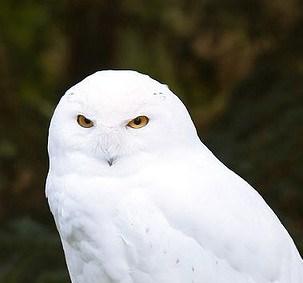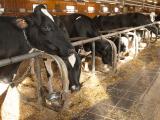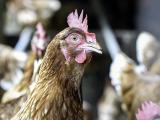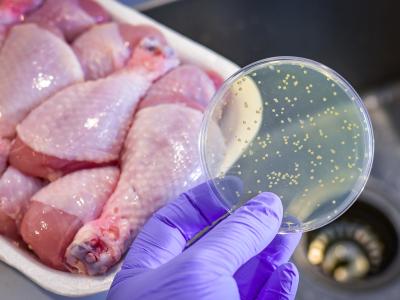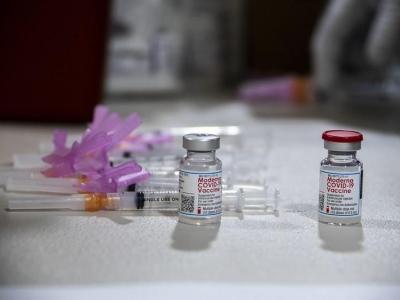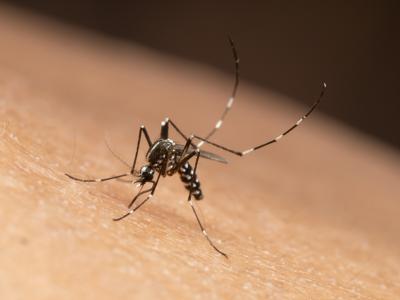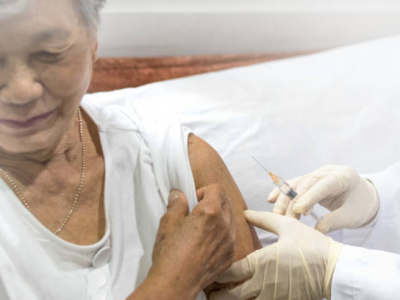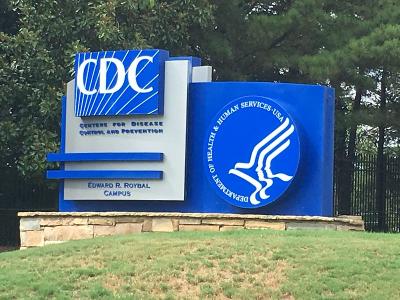Evidence of the H5N2 avian influenza virus has been found in air samples collected in and near infected Minnesota poultry barns, a researcher said today, supporting the suspicion that the virus may go airborne for short distances, while Iowa reported seven new H5 outbreaks involving 4 million chickens and an unknown number of turkeys.
In addition, Wisconsin authorities today reported finding H5N2 in an owl along Green Bay, while hard-hit Minnesota had its second day this week without any new poultry outbreaks.
Air sampling findings
Montse Torremorell, DVM, PhD, of the University of Minnesota said she and three colleagues did a pilot air sampling study at three Minnesota farms with infected poultry.
"Our results indicated that influenza genetic material can be detected in air samples collected inside and immediately outside of infected poultry facilities. We still don't know whether virus was viable or not, and those analyses are in progress," said Torremorell, who holds the Allen D. Leman Chair in swine health and productivity.
"So far we have shown that HPAI [highly pathogenic avian influenza] can be aerosolized from infected facilities," she added. "However, the implications of these findings in terms of understanding the transmission of HPAI between flocks needs further investigation." The study focused on a total of four poultry barns on the three farms.
Torremorell said the study was commissioned by the US Department of Agriculture's Animal and Plant Health Inspection Service (APHIS). The agency's National Veterinary Services Laboratories (NVSL) in Ames, Iowa, are testing the samples to see if they contain any viable virus particles.
Other participants in the study are Peter Davies, BVSc, PhD, Peter Raynor, PhD, and Carmen Alonso, DVM, all with the University of Minnesota in St. Paul, Torremorell said.
The possibility of airborne transmission of H5N2 has been increasingly discussed as the situation has evolved over the past 2 months. In the early going, affected farms were widely scattered, and in most cases only one barn on each farm was infected. The general assumption was that particles of infected feces from wild waterfowl were being carried into barns by workers or equipment.
But more recently, multiple neighboring farms and multiple barns per farm have been hit, suggesting that the virus may be spreading from farm to farm and barn to barn, possibly via airborne dust or feathers. The results noted by Torremorell today mark the first reported effort to test the hypothesis in the current H5N2 crisis.
More Iowa egg farms hit
The Iowa Department of Agriculture and Land Stewardship (IDALS) announced today that H5 virus outbreaks have been detected on two large egg farms and five turkey farms in five counties. They raise the state's outbreak total to 44.
The NVSL is doing further testing to determine if the virus is H5N2, of which there seemed little doubt.
The two big egg farms are both in north-central Iowa's Wright County, one with 2.9 million layers and the other with 1.1 million, the IDALS announcement said. The detections mark the second and third H5 events in the county.
The bird numbers for the two farms, combined with previous reports, suggest that Iowa's total loss of layer chickens is heading toward 24 million. Before the H5N2 crisis, the state's total layer hen population was estimated at about 60 million. Iowa leads the nation in egg production.
Of the five turkey farm outbreaks, one represents the first H5 incident in Palo Alto County, which, like most of the other affected counties, is in northwestern Iowa. An estimate of the flock size was not yet available.
Two of the turkey outbreaks are in Buena Vista County, raising its avian flu tally to 12 farms, according to the IDALS. One farm has an estimated 42,000 turkeys, but the number for the other one was not yet available.
The virus also surfaced on single turkey farms in Cherokee and Sac counties, signaling the fifth and third outbreaks in those jurisdictions, respectively. Flock size estimates were still pending for both.
Infected owl in Wisconsin
In Wisconsin, a snowy owl that was found dead in mid-April on the shore of Green Bay tested positive for the H5N2 virus, the state Department of Natural Resources (DNR) reported today. The find was in the town of Oconto, north of the city of Green Bay. It was the first detection of H5N2 in Wisconsin in a wild bird or anywhere other than a farm.
"The result from this owl does not indicate widespread presence of the virus in Wisconsin's wild bird population and no cause of the current domestic poultry infections can be determined from this result," the DNR said. An Associated Press report today said there are no poultry farms near where the owl was found.
Very few wild birds in the Midwest have been found infected with H5N2. Minnesota reported its first wild-bird detection on Apr 30, involving a Cooper's hawk in the southwestern part of the state.
Another pause in Minnesota
In other developments, Minnesota officials reported no new H5N2 outbreaks today, suggesting that the virus's spread may be slowing. From Apr 15 through May 5 the state reported new H5N2 findings every day. That streak finally ended 2 days ago (May 6), but yesterday two outbreaks were reported.
State officials also said today that they have finished testing all 3,138 fecal samples collected this spring from wild waterfowl, with no H5N2 findings. About half of the samples came from near the infected farms, and the rest were control samples from wildlife areas around the state, according to today's update from the Minnesota Department of Public Safety (DPS).
Minnesota officials have also conducted one round of surveillance in 1,022 backyard poultry flocks, with only one infected flock found, the update said. No infections have been found in a second round of surveillance in 54 backyard flocks.
See also:
May 8 IDALS announcement
May 8 Minnesota DPS update
Wisconsin DNR statement noting snowy owl detection (updated May 8)
